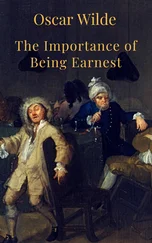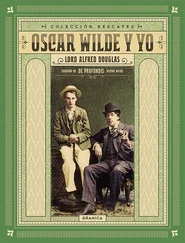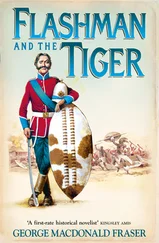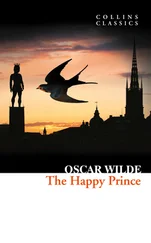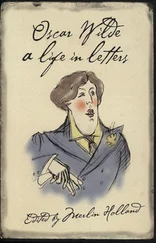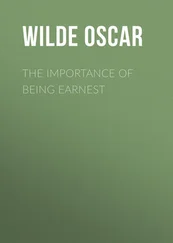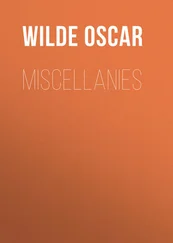Oscar Wilde - A Critic in Pall Mall - Being Extracts from Reviews and Miscellanies
Здесь есть возможность читать онлайн «Oscar Wilde - A Critic in Pall Mall - Being Extracts from Reviews and Miscellanies» — ознакомительный отрывок электронной книги совершенно бесплатно, а после прочтения отрывка купить полную версию. В некоторых случаях можно слушать аудио, скачать через торрент в формате fb2 и присутствует краткое содержание. Жанр: foreign_prose, на английском языке. Описание произведения, (предисловие) а так же отзывы посетителей доступны на портале библиотеки ЛибКат.
- Название:A Critic in Pall Mall: Being Extracts from Reviews and Miscellanies
- Автор:
- Жанр:
- Год:неизвестен
- ISBN:нет данных
- Рейтинг книги:5 / 5. Голосов: 1
-
Избранное:Добавить в избранное
- Отзывы:
-
Ваша оценка:
- 100
- 1
- 2
- 3
- 4
- 5
A Critic in Pall Mall: Being Extracts from Reviews and Miscellanies: краткое содержание, описание и аннотация
Предлагаем к чтению аннотацию, описание, краткое содержание или предисловие (зависит от того, что написал сам автор книги «A Critic in Pall Mall: Being Extracts from Reviews and Miscellanies»). Если вы не нашли необходимую информацию о книге — напишите в комментариях, мы постараемся отыскать её.
A Critic in Pall Mall: Being Extracts from Reviews and Miscellanies — читать онлайн ознакомительный отрывок
Ниже представлен текст книги, разбитый по страницам. Система сохранения места последней прочитанной страницы, позволяет с удобством читать онлайн бесплатно книгу «A Critic in Pall Mall: Being Extracts from Reviews and Miscellanies», без необходимости каждый раз заново искать на чём Вы остановились. Поставьте закладку, и сможете в любой момент перейти на страницу, на которой закончили чтение.
Интервал:
Закладка:
Oscar Wilde
A Critic in Pall Mall: Being Extracts from Reviews and Miscellanies
THE TOMB OF KEATS
As one enters Rome from the Via Ostiensis by the Porta San Paolo, the first object that meets the eye is a marble pyramid which stands close at hand on the left.
There are many Egyptian obelisks in Rome – tall, snakelike spires of red sandstone, mottled with strange writings, which remind us of the pillars of flame which led the children of Israel through the desert away from the land of the Pharaohs; but more wonderful than these to look upon is this gaunt, wedge-shaped pyramid standing here in this Italian city, unshattered amid the ruins and wrecks of time, looking older than the Eternal City itself, like terrible impassiveness turned to stone. And so in the Middle Ages men supposed this to be the sepulchre of Remus, who was slain by his own brother at the founding of the city, so ancient and mysterious it appears; but we have now, perhaps unfortunately, more accurate information about it, and know that it is the tomb of one Caius Cestius, a Roman gentleman of small note, who died about 30 b. c.
Yet though we cannot care much for the dead man who lies in lonely state beneath it, and who is only known to the world through his sepulchre, still this pyramid will be ever dear to the eyes of all English-speaking people, because at evening its shadows fall on the tomb of one who walks with Spenser, and Shakespeare, and Byron, and Shelley, and Elizabeth Barrett Browning in the great procession of the sweet singers of England.
For at its foot there is a green sunny slope, known as the Old Protestant Cemetery, and on this a common-looking grave, which bears the following inscription:
This grave contains all that was mortal of a young English poet, who on his deathbed, in the bitterness of his heart, desired these words to be engraven on his tombstone: Here lies one whose name was writ in water. February 24, 1821.
And the name of the young English poet is John Keats.
Lord Houghton calls this cemetery ‘one of the most beautiful spots on which the eye and heart of man can rest,’ and Shelley speaks of it as making one ‘in love with death, to think that one should be buried in so sweet a place’; and indeed when I saw the violets and the daisies and the poppies that overgrow the tomb, I remembered how the dead poet had once told his friend that he thought the ‘intensest pleasure he had received in life was in watching the growth of flowers,’ and how another time, after lying a while quite still, he murmured in some strange prescience of early death, ‘I feel the flowers growing over me.’
But this time-worn stone and these wildflowers are but poor memorials 1 1 Reverently some well-meaning persons have placed a marble slab on the wall of the cemetery with a medallion-profile of Keats on it and some mediocre lines of poetry. The face is ugly, and rather hatchet-shaped, with thick sensual lips, and is utterly unlike the poet himself, who was very beautiful to look upon. ‘His countenance,’ says a lady who saw him at one of Hazlitt’s lectures, ‘lives in my mind as one of singular beauty and brightness; it had the expression as if he had been looking on some glorious sight.’ And this is the idea which Severn’s picture of him gives. Even Haydon’s rough pen-and-ink sketch of him is better than this ‘marble libel,’ which I hope will soon be taken down. I think the best representation of the poet would be a coloured bust, like that of the young Rajah of Koolapoor at Florence, which is a lovely and lifelike work of art.
of one so great as Keats; most of all, too, in this city of Rome, which pays such honour to her dead; where popes, and emperors, and saints, and cardinals lie hidden in ‘porphyry wombs,’ or couched in baths of jasper and chalcedony and malachite, ablaze with precious stones and metals, and tended with continual service. For very noble is the site, and worthy of a noble monument; behind looms the grey pyramid, symbol of the world’s age, and filled with memories of the sphinx, and the lotus leaf, and the glories of old Nile; in front is the Monte Testaccio, built, it is said, with the broken fragments of the vessels in which all the nations of the East and the West brought their tribute to Rome; and a little distance off, along the slope of the hill under the Aurelian wall, some tall gaunt cypresses rise, like burnt-out funeral torches, to mark the spot where Shelley’s heart (that ‘heart of hearts’!) lies in the earth; and, above all, the soil on which we tread is very Rome!
As I stood beside the mean grave of this divine boy, I thought of him as of a Priest of Beauty slain before his time; and the vision of Guido’s St. Sebastian came before my eyes as I saw him at Genoa, a lovely brown boy, with crisp, clustering hair and red lips, bound by his evil enemies to a tree, and though pierced by arrows, raising his eyes with divine, impassioned gaze towards the Eternal Beauty of the opening heavens. And thus my thoughts shaped themselves to rhyme:
Rid of the world’s injustice and its pain,
He rests at last beneath God’s veil of blue;
Taken from life while life and love were new
The youngest of the martyrs here is lain,
Fair as Sebastian and as foully slain.
No cypress shades his grave, nor funeral yew,
But red-lipped daisies, violets drenched with dew,
And sleepy poppies, catch the evening rain
proudest heart that broke for misery!
O saddest poet that the world hath seen!
O sweetest singer of the English land!
Thy name was writ in water on the sand,
But our tears shall keep thy memory green,
And make it flourish like a Basil-tree.
KEATS’S SONNET ON BLUE
During my tour in America I happened one evening to find myself in Louisville, Kentucky. The subject I had selected to speak on was the Mission of Art in the Nineteenth Century, and in the course of my lecture I had occasion to quote Keats’s Sonnet on Blue as an example of the poet’s delicate sense of colour-harmonies. When my lecture was concluded there came round to see me a lady of middle age, with a sweet gentle manner and a most musical voice. She introduced herself to me as Mrs. Speed, the daughter of George Keats, and invited me to come and examine the Keats manuscripts in her possession. I spent most of the next day with her, reading the letters of Keats to her father, some of which were at that time unpublished, poring over torn yellow leaves and faded scraps of paper, and wondering at the little Dante in which Keats had written those marvellous notes on Milton. Some months afterwards, when I was in California, I received a letter from Mrs. Speed asking my acceptance of the original manuscript of the sonnet which I had quoted in my lecture. This manuscript I have had reproduced here, as it seems to me to possess much psychological interest. It shows us the conditions that preceded the perfected form, the gradual growth, not of the conception but of the expression, and the workings of that spirit of selection which is the secret of style. In the case of poetry, as in the case of the other arts, what may appear to be simply technicalities of method are in their essence spiritual not mechanical, and although, in all lovely work, what concerns us is the ultimate form, not the conditions that necessitate that form, yet the preference that precedes perfection, the evolution of the beauty, and the mere making of the music, have, if not their artistic value, at least their value to the artist.
Читать дальшеИнтервал:
Закладка:
Похожие книги на «A Critic in Pall Mall: Being Extracts from Reviews and Miscellanies»
Представляем Вашему вниманию похожие книги на «A Critic in Pall Mall: Being Extracts from Reviews and Miscellanies» списком для выбора. Мы отобрали схожую по названию и смыслу литературу в надежде предоставить читателям больше вариантов отыскать новые, интересные, ещё непрочитанные произведения.
Обсуждение, отзывы о книге «A Critic in Pall Mall: Being Extracts from Reviews and Miscellanies» и просто собственные мнения читателей. Оставьте ваши комментарии, напишите, что Вы думаете о произведении, его смысле или главных героях. Укажите что конкретно понравилось, а что нет, и почему Вы так считаете.


